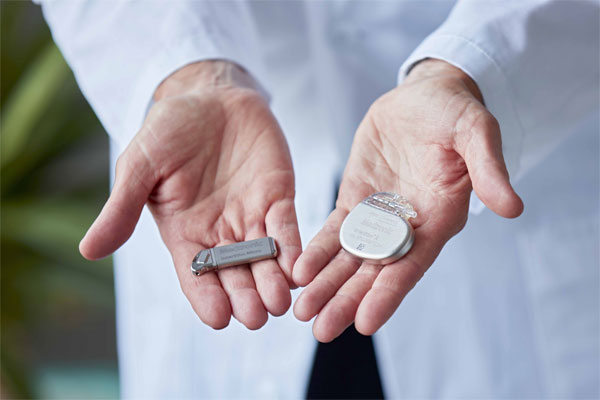Koobay 14" Wooden Trousers Bottom Clips Hangers w Rose Gold.
Interested: 05 Availablity: In Stock
Cras ultricies ligula sed magna dictum porta. Curabitur non nulla sit amet nisl tempus convallis quis ac lectus.
Evidence suggests that breakdowns in the bladder-brain communication pathway are the root cause of OAB and non-obstructive urinary retention.1-3 While other therapies focus on the bladder muscles, Medtronic therapies target the nerves, which is thought to help restore normal bladder function.*
The InterStim™ System targets the nerves that control your bladder to help it function normally again.
Implanting an InterStim™ system has risks similar to any surgical procedure, including swelling, bruising, bleeding and infection. Talk with our doctor about ways to minimize these risks. Complications can occur with the evaluation, including movement of the wire, technical problems with the device and some temporary pain.
Your doctor or nurse will provide you with the information regarding how to operate the test device, and inform you of other precautions related to the evaluation and activity restrictions.
In addition to risks related to surgery, complications can include pain at the implant sites, new pain, infection, lead (thin wire) movement/migration, device problems, undesirable changes in urinary or bowel function, and uncomfortable stimulation (sometimes described as a jolting or shocking feeling). Talk with your doctor about ways to minimize these risks.
* With the InterStim system, restored bladder function is defined as a 50% or greater reduction in your troublesome bladder symptoms.
† The most common adverse events experienced during clinical studies included pain at implant sites, new pain, lead migration, infection, technical or device problems, adverse change in bowel or voiding function, and undesirable stimulation or sensations. Any of these may require additional surgery or cause return of symptoms.
1. Leng WW, Morrisroe SN. Sacral nerve stimulation for the overactive bladder. Urol Clin N Am. 2006;33:491-501.
2. Siegel S, Noblett K, Mangel J, et al. Results of a prospective, randomized, multicenter study evaluating sacral neuromodulation with InterStim® Therapy compared to standard medical therapy at 6-months in subjects with mild symptoms of overactive bladder. Neurourol Urodyn. 2015;34:224–230. DOI: 10.1002/nau.22544
3. Visco AG, Brubaker L, Richter HE, et al. N Engl J Med. 2012;367(19):1803-1813.
4. Peters KM, MacDiarmid SA, Wooldridge LS, et al. J Urol. 2009;182(3):1055-1061.
5. Siegel S, Noblett K, Mangel J, et al. Five-Year Follow-up Results of a Prospective, Multicenter Study of Patients with Overactive Bladder Treated with Sacral Neuromodulation. The Journal of Urology 2018;Volume 199(1), 229 – 236.
6. Medtronic-sponsored research. InterStim Therapy Clinical Summary, 2018.

1. Dasgupta R. Critchley HD, Dolan RJ, Fowler CJ. Changes in brain activity following sacral Neuromodulation for urinary retention. J Urol. 2005;174:2268-2272
2. Griffiths D, Derbyshire S, Stenger A, Resnick N. Brain control of normal and overactive bladder. J Urol. 2005;174:1862-1867.
3. Griffiths D, Tadic SD. Bladder control, urgency, and urge incontinence: evidence from functional brain imaging. Neurourol Urodyn. 2008;27(6):466-474.
4. Noblett K, Siegel S, Mangel J, et al. Results of a Prospective, Multicenter study evaluating quality of life, safety, and efficacy of sacral neuromodulation at twelve months in subjects with symptoms of overactive bladder. Neurourol Urodyn. 2014. doi:10.1002/nau.22707.
5. Siegel S, Noblett K, Mangel J, et al. Results of a prospective, randomized, multicenter study evaluating sacral neuromodulation with InterStim® Therapy compared to standard medical therapy at 6-months in subjects with mild symptoms of overactive bladder. Neurourol Urodyn. 2015;34:224–230. DOI: 10.1002/nau.22544.
*Success with SNM is defined as a 50% or greater reduction in your troublesome bladder symptoms.
**Numbers reflect completers analysis defined as patients with diary data at baseline and 12 months (n=220). Clinical success was 82% at 12 months using the modified completers analysis (subjects who either had a baseline and 12 month evaluation or withdrew early due to device-related reasons and are considered failures).
Information on this site should not be used as a substitute for talking with your doctor. Always talk with your doctor about diagnosis and treatment information.
GU Ohio Urology